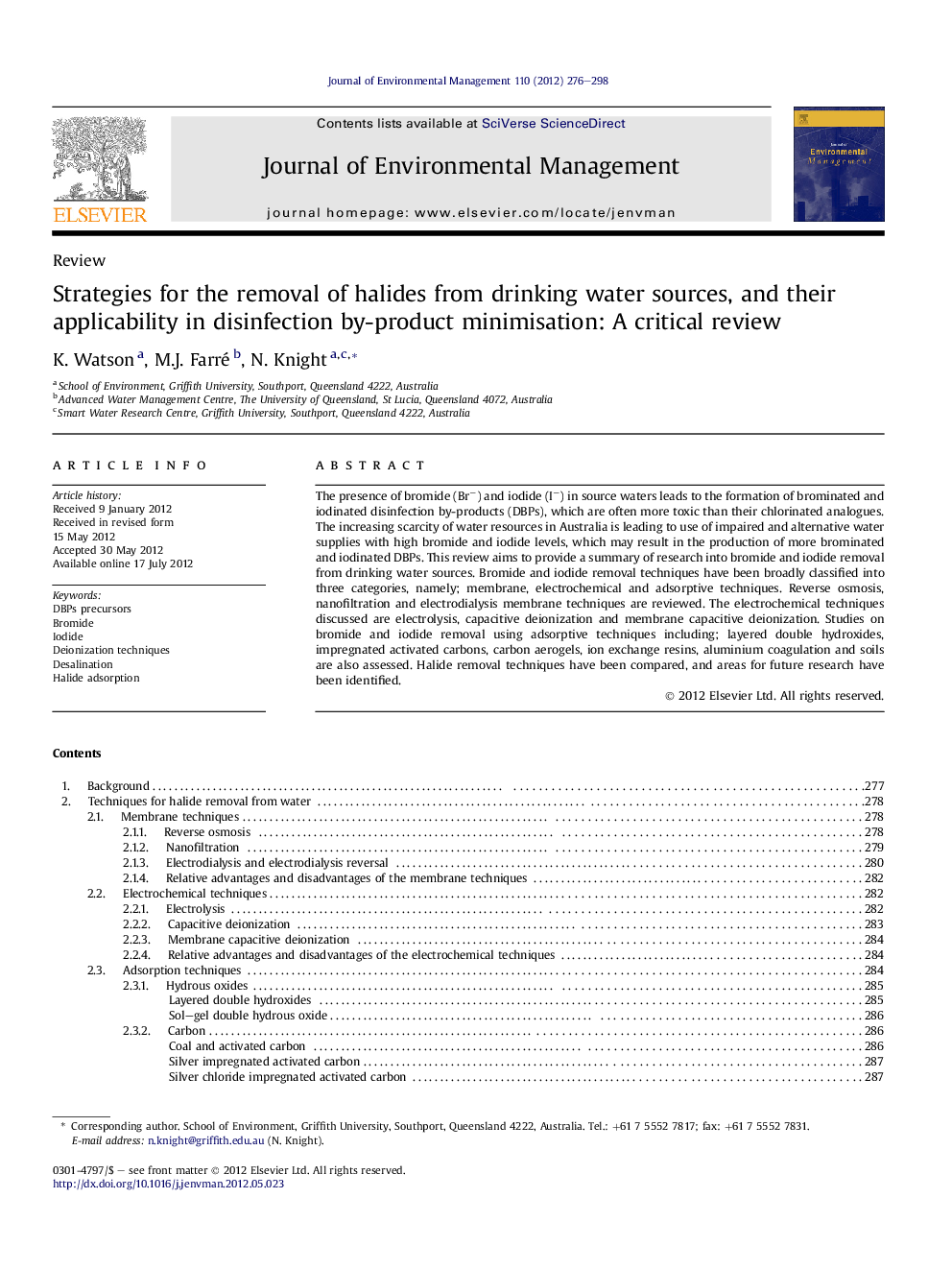| کد مقاله | کد نشریه | سال انتشار | مقاله انگلیسی | نسخه تمام متن |
|---|---|---|---|---|
| 1056528 | 1485302 | 2012 | 23 صفحه PDF | دانلود رایگان |

The presence of bromide (Br−) and iodide (I−) in source waters leads to the formation of brominated and iodinated disinfection by-products (DBPs), which are often more toxic than their chlorinated analogues. The increasing scarcity of water resources in Australia is leading to use of impaired and alternative water supplies with high bromide and iodide levels, which may result in the production of more brominated and iodinated DBPs. This review aims to provide a summary of research into bromide and iodide removal from drinking water sources. Bromide and iodide removal techniques have been broadly classified into three categories, namely; membrane, electrochemical and adsorptive techniques. Reverse osmosis, nanofiltration and electrodialysis membrane techniques are reviewed. The electrochemical techniques discussed are electrolysis, capacitive deionization and membrane capacitive deionization. Studies on bromide and iodide removal using adsorptive techniques including; layered double hydroxides, impregnated activated carbons, carbon aerogels, ion exchange resins, aluminium coagulation and soils are also assessed. Halide removal techniques have been compared, and areas for future research have been identified.
► Membrane techniques are efficient at removing halide DBP precursors from water.
► Electrochemical techniques remove halides but do not effectively remove organic DBP precursors.
► Adsorptive halide removal techniques are difficult with competing anions present.
Journal: Journal of Environmental Management - Volume 110, 15 November 2012, Pages 276–298